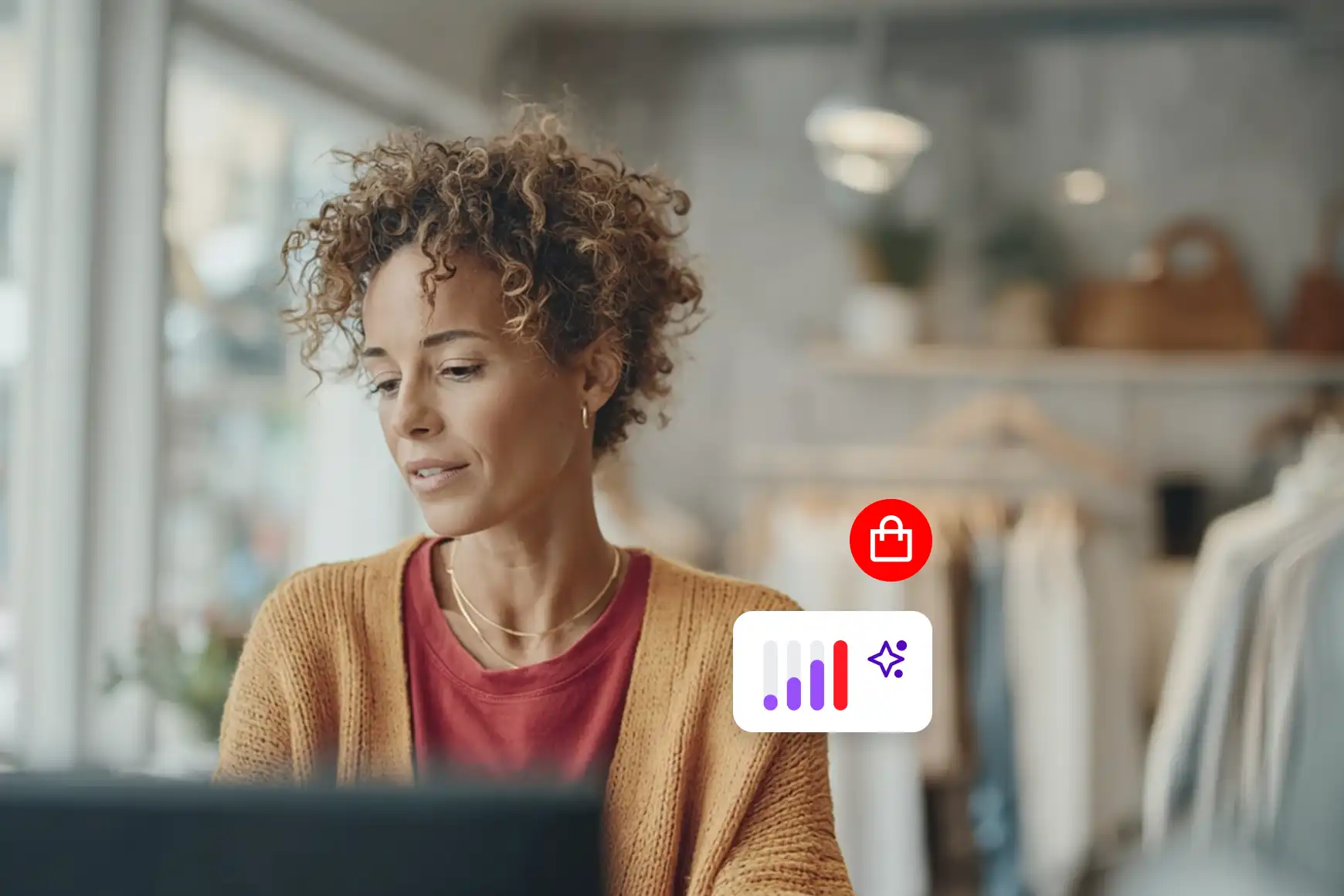Omnichannel customer journey: The ultimate guide

By Celia Cerdeira
0 min read

What does it take to truly meet customers where they are—on their terms, across every touchpoint? The answer lies in understanding the omnichannel customer journey.
Traditionally, customer interactions happened in silos, with each channel—whether online, in-store, or through phone support—functioning independently. However, today’s customers don’t think in channels. They expect a fluid, consistent experience wherever they interact with an organization.
An omnichannel customer journey eliminates those silos by connecting each touchpoint into a unified, personalized experience. By delivering this level of seamless engagement, organizations can better meet rising customer expectations, boost satisfaction, improve loyalty, and increase customer lifetime value (CLV).
In this guide, we’ll learn more about the omnichannel customer journey, how to map one out, and the benefits.
What is an omnichannel customer journey?
An omnichannel customer journey is a seamless, integrated customer experience across multiple channels and touchpoints, including offline channels like the phone, as well as digital channels such as social media, chatbots, and mobile apps. It aims to provide a consistent and cohesive experience for customers, regardless of the channel or device they use to engage with.
Although many organizations use multiple communication channels, they often aren’t integrated, and information remains siloed even within the same organization. This strategy is known as multichannel rather than omnichannel.
Customer communication has evolved far beyond in-store support, phone calls, and email. Now, there are many opportunities for meaningful interactions (and chances to improve customer loyalty), including:
-
Mobile apps: Customers browse products, check rewards, track orders, and make purchases—often while multitasking on the go.
-
Live chat: Visitors want instant support during their browsing sessions and will often abandon a site if they’re kept waiting.
-
SMS: Quick text updates help confirm orders, share shipping notifications, or answer basic questions in real time.
-
Social media: Customers engage with brands through likes, comments, DMs, and mentions—and they expect fast, friendly replies.
-
Self-service chatbots: AI-powered assistants help users troubleshoot, track orders, or get answers to common questions often outside of regular business hours.
There are more pathways than ever for customers to connect with a contact center, but without a clear strategy, it’s easy for organizations to fall behind. To keep up with demand and deliver a consistent experience, what’s needed is a focused, well-orchestrated plan of action.
What does an omnichannel customer journey look like?
The acquisition funnel isn’t linear anymore. Customers bounce between awareness, consideration, decision, and advocacy stages, interacting with an organization dozens of times before committing to a purchase.
Four critical stages define the modern customer journey:
-
Awareness: First impressions happen fast, often through a scroll on social media or a quick Google search.
-
Consideration: Customers compare options across tabs, devices, and platforms, weighing every detail before they commit.
-
Decision: Purchases can happen in unexpected places—during a lunch break, in an app, or after a well-timed text.
-
Delight: A great experience turns customers into loyal fans. A poor one? It might become a public review just as fast.
Omnichannel success means being able to follow customers through a maze of interactions. It’s about recognizing the same individual across every touchpoint and making each experience feel connected, personal, and effortless.
Here’s what that can look like in action:
-
A customer scrolling through a Facebook feed spots an ad for a new product from a favorite brand.
-
Clicks through to the brand’s website to learn more about the product.
-
Leaves the site, then receives a personalized discount offer for the item via email.
-
Heads to a nearby store to check it out in person. The store associate pulls up preferences and purchase history to recommend the version that best fits the customer’s needs.
-
Buys the product in-store but has it delivered.
-
Gets order updates and tracks the package using the brand’s mobile app.
-
Once the package arrives, a follow-up message confirms that everything was delivered as expected.
-
When a question about setup comes up, the customer calls the support line and speaks with a human agent who is aware of the purchase and helps with the installation process.
This isn’t just good customer service; it’s what customers expect as they move between platforms, devices, and real-world interactions.
Six steps to mapping an omnichannel customer journey.
Understanding customer behavior is a crucial first step to creating a successful omnichannel strategy. Start by mapping a customer’s typical journey, noting the ways they interact with an organization along the way.
Consider this step-by-step approach to mapping the omnichannel customer journey.
1. Identify preferred channels for communication.
Before building out an omnichannel strategy, an organization needs to get crystal clear on where their customers spend time—and how they actually want to communicate. That means going beyond assumptions and doing the research. It takes a mix of data and direct feedback to understand which channels matter most to different segments of a customer base.
For example, millennials might lean heavily on in-app messaging and social platforms, while older audiences may prefer email or a quick phone call. But it’s not just about demographics—it’s also about context. A customer might prefer using a chatbot to check an order status, but when something goes wrong, they want a real person on the line.
To get these insights, businesses should combine several research methods:
- Customer surveys that ask about preferred ways to connect.
- Engagement data from current channels.
- Audience communication habits and behavior.
- Competitor analysis to see what’s working in the market.
- Industry reports that track emerging trends in customer interaction.
Smart brands don’t just identify popular channels; they also understand when and why customers prefer each one. A strong omnichannel journey accounts for those preferences, ensuring every touchpoint is intentional and effective.
2. Outline your customer personas.
Customer personas transform vague marketing targets into living, breathing individuals with specific needs and behaviors. Companies that don’t understand their customers end up with generic customer journeys that satisfy no one.
Building strong personas takes a blend of data and human insight. To get it right, organizations should:
- Analyze customer demographics from CRM data.
- Conduct interviews with a wide range of real customers.
- Review historical communication data to identify common pain points and needs.
- Analyze social media engagement to understand customer interests.
- Survey sales and support teams for frontline insights about customer types.
The most valuable personas include:
- Demographics: Age, location, income, and occupation—all of which influence channel usage.
- Behavior patterns: When, how, and why these customers typically engage with brands.
- Pain points: Frustrations or barriers they commonly face during the journey.
- Goals and motivations: What drives them to make decisions.
- Communication preferences: Which channels they use, and how their tone or expectations shift based on context.
With detailed personas, organizations can design omnichannel customer experiences that feel personal, relevant, and intuitive at every step.
3. Study customer interactions.
An organization needs to analyze customer feedback across all channels to identify patterns that reveal friction points, bottlenecks, and potential problems.
This analysis means examining conversations beyond simple metrics. Support transcripts, chat logs, social comments, and recorded calls contain invaluable insights. Companies should look for:
-
Channel switching patterns. Customers abandoning one channel for another signal friction points in the journey, like when website visitors suddenly call support after failing to complete an online checkout.
-
Repetitive questions. Questions that appear across multiple channels indicate information gaps or unintuitive processes that frustrate customers at scale.
-
Timing bottlenecks. Spikes in support volume during specific steps in the customer journey reveal process breakdowns requiring immediate attention.
-
Emotional indicators. Sentiment analysis across channels identifies moments of customer frustration or delight that quantitative metrics miss.
-
Resolution timelines. Extended time-to-resolution, especially when involving multiple channels, exposes broken handoff processes between departments.
Concrete examples of these friction points appear across industries. Banking customers, for example, might abandon mobile app account creation and then call customer service when identity verification steps fail without clear error messages. E-commerce shoppers may contact support through chat, email, and phone about the same order status because updates don’t sync across channels.
Plus, customers aren’t afraid to switch if they’re disappointed. Research shows that 71% of consumers ditch brands if they feel they’re not getting support.
4. Visually diagram the omnichannel customer journey.
Data-driven organizations create visual journey maps that transform complex interactions into clear, actionable flows that ensure seamless transitions between stages.
These helpful diagrams typically include:
-
A timeline showing the complete customer lifecycle.
-
All possible touchpoints across channels, including where customers might start or end the journey.
-
Decision points where customers choose to move between channels.
-
Customer emotions at each journey stage.
-
Systems or data that might support each different journey stage.
-
Transition points between channels where issues may arise.
Leading organizations are turning to customer journey orchestration software like Talkdesk Studio, which empowers teams to design, test, and optimize customer flows in real time. These platforms go far beyond static visuals. With tools like these, businesses can:
-
Create drag-and-drop visual representations of every possible customer pathway.
-
Design customer routes based on context and history.
-
Simulate journeys to identify potential bottlenecks before deployment.
-
Implement changes without needing extensive coding experience or development resources.
-
Connect previously siloed channels into seamless experiences.
The most valuable journey diagrams allow customers to move effortlessly between channels while contextual data follows them throughout their journey.
5. Monitor and adapt customer journey flows.
Omnichannel customer journeys should be reviewed regularly to reflect changing audience data. Organizations need robust analytics that track metrics across individual journeys. These metrics provide a panoramic view of the process so contact centers can adjust as pain points and roadblocks arise.
Take a look at these critical KPIs for journey optimization:
-
Customer satisfaction score (CSAT). Measures customer sentiment at key journey points, revealing where customers are feeling satisfied or frustrated.
-
Customer effort score (CES). Quantifies how much work customers must invest to complete key journey steps, with high scores indicating friction points requiring immediate attention.
-
Net promoter score (NPS). Identifies which journey paths create brand advocates versus detractors, often revealing dramatic differences based on channels used.
-
First contact resolution (FCR). Measures how often customer issues are resolved in a single interaction.
-
Average handle time (AHT). Helps contact centers understand how long it takes to handle a customer interaction from start to finish.
Customer feedback surveys provide another crucial reporting tool. Post-interaction surveys deployed across journey points can reveal optimization opportunities or issues specific to certain touchpoints.
6. Foster cross-team collaboration.
Encourage collaboration among contact center teams responsible for different channels. This helps with consistent messaging, knowledge sharing, and alignment on strategic goals. Just as customers expect an integrated experience, teams should collaborate on customer experience from the first interaction to becoming a raving fan.
The right contact center solution serves as the central system connecting these departments. When teams share access to customer experience analytics, they develop a unified view of journey performance that goes beyond typical departmental boundaries.
This shared information can reduce all-too-common scenarios, such as:
- Marketing creates promotions without informing support teams.
- Product launches features without updating knowledge bases.
- Sales makes promises that support teams can’t fulfill.
- IT implements system changes without considering journey impacts.
Organizations with effective journey management establish cross-functional teams with representatives from each department. These teams meet regularly to review journey metrics, upcoming initiatives, and potential issues ensuring customers receive consistent experiences regardless of channel.
What are the benefits of omnichannel customer journey mapping?
By mapping the omnichannel customer journey, organizations gain the clarity needed to improve key moments across the entire experience, starting with benefits like these:
- Streamline onboarding. Identify exactly where new customers run into friction, then simplify those steps to reduce drop-off and increase engagement from day one.
- Grade and improve customer experience. Build a framework for measuring the quality of a customer’s experience across multiple touchpoints. Use data to fine-tune strategies into a winning formula.
- Align with real customer behavior. Visualize the actual paths customers take, not the idealized ones.
- Improve customer retention. By identifying moments when customers consider abandoning the relationship, journey maps highlight critical intervention points where proactive solutions can transform problems into loyalty.
- Unify customer data. Creating a journey map pulls insights from across the business, encouraging teams to break down data silos and build a centralized, shared understanding of the customer.
Overall, an omnichannel customer journey provides greater insight into the most important part of any organization: its customers.
What are the challenges of omnichannel customer journey mapping?
A process as detailed as customer journey mapping might have a few challenges. Potential obstacles include:
-
Outdated technology. Many legacy systems weren’t designed to support omnichannel. They store customer data in fragmented or outdated formats, forcing companies to choose between costly overhauls or complicated workarounds just to piece together a unified view.
-
Data silos. When customer data is scattered across departments, like marketing, sales, or support, it becomes difficult to get a unified view. Each team holds part of the puzzle, but without the right tools or processes, it’s nearly impossible to bring everything together.
-
Conflicting priorities. Different teams often work toward different goals. Misaligned KPIs and departmental objectives can lead to resistance when trying to implement new, cross-functional strategies like journey mapping.
-
Inconsistent messaging. Without a centralized approach to content and communication, organizations risk sending mixed signals. Varying messaging, pricing, or policies across channels can confuse customers and erode trust, especially when journey mapping reveals these inconsistencies.
Build an omnichannel customer journey with Talkdesk.
A strong omnichannel customer journey map helps businesses meet customers where they are by revealing how communication flows across channels and where gaps need attention. However, creating that map can be complex without the right tools and insights.
By analyzing large volumes of data, AI uncovers hidden patterns, predicts customer behavior, and personalizes touchpoints in real time. It helps businesses streamline experiences, reduce friction, and build loyalty while cutting costs and driving growth.
Let’s see how AI is helping organizations better understand their customers:
- TireHub, a national tire distributor, faced complex customer challenges across diverse markets and regions. By leveraging Talkdesk Copilot™, the company was able to meet customers across multiple channels while easing the burden on its overwhelmed service team. With smarter automation and optimized workflows, TireHub now handles over 2,500 customer interactions daily with a 90% accuracy rate on AI-generated call summaries.
- Nassau Financial Group, a digitally enabled financial services provider, uses Talkdesk Financial Services Experience Cloud to bring greater flexibility to its customer service approach. With AI-powered tools streamlining interactions, the company has seen average handle time (AHT) drop by 90 seconds while delivering a more satisfying experience.
With Talkdesk cloud contact center and omnichannel engagement, companies can map smarter customer journeys and meet customers wherever they are—on their terms.
Omnichannel customer journey FAQs.
An omnichannel customer journey creates a seamless ecosystem where customers transition seamlessly between communication channels while brands maintain full visibility of all previous interactions.
Implementing an omnichannel customer journey involves a full-scale inventory of the existing customer experience. Then, they can use that data to restructure and remap their new customer journey, incorporating technology, data, and communication channels to support and assist at each touchpoint.
An omnichannel customer journey boosts engagement, enhances customer satisfaction, and improves loyalty by providing seamless, personalized experiences across all touchpoints, leading to increased revenue and reduced costs.
Implementing an omnichannel customer journey can be challenging due to data integration, inconsistent customer experiences, technology limitations, maintaining real-time updates, and aligning teams across channels to deliver a unified approach.
Different demographics may prefer different methods for interacting with their favorite brands and organizations. For example, customers for a technology company might prefer in-app communication, while banking customers may prefer chatting over the phone.
Artificial intelligence (AI) can improve the omnichannel customer journey in various ways. AI provides real-time context analysis, predicts customer needs, and can personalize customer interactions at scale driving improvements in the customer experience.







